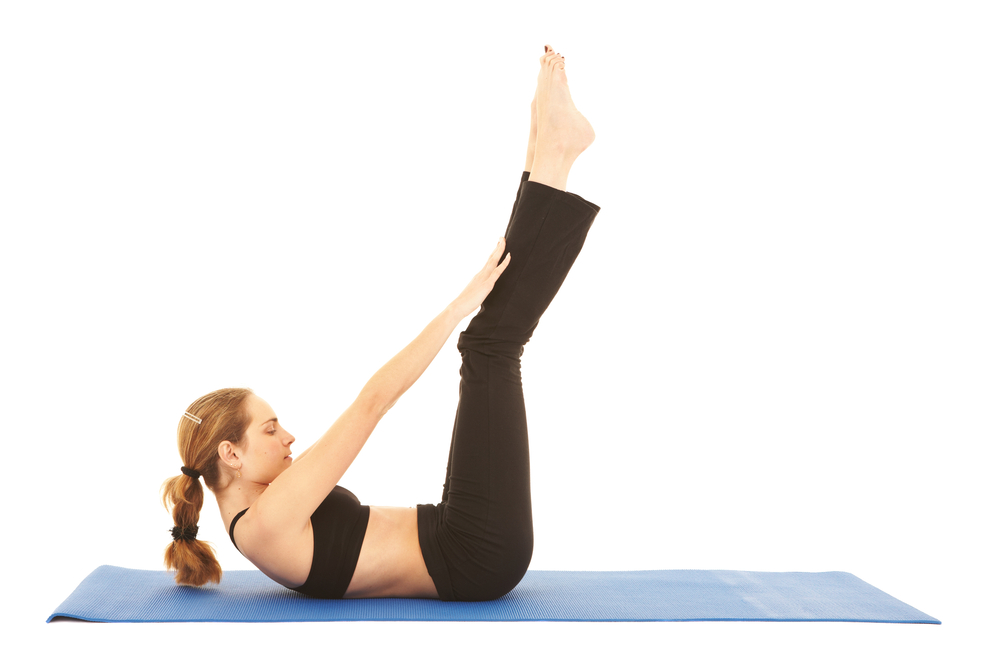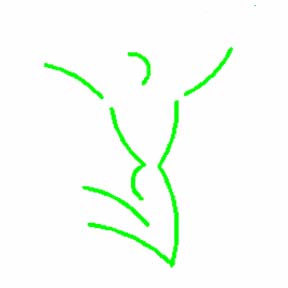Why does my back hurt when I do leg raises? Are leg raises bad for lower back pain?
How do I stop my back from hurting when I do leg raises?
LLeg Raises and Back Pain
June 2023
If you have ever searched for the answers as to why leg raises hurt your low back, or if this is even a safe exercise to do, you have probably become confused by the conflicting and confusing answers available. A typical google search yields a mix of opinions of how to perform the exercise which all support the idea that there is a simple right and wrong way for everyone with back pain to execute the leg raise movement. The following top search results all favor this philosophy, but yet they all disagree on how to actually perform the exercise. Unfortunately, all of these opinions fall far from the truth.
What these and other so called "authorities" are failing to explain is that leg raises need to be modified depending on what your specific back issues are. In other words, the safest way to perform leg raises is to customize the exercise to support your unique spinal stability. Tailoring the leg raise movement to prevent low back pain based on identifying the cause of your pain and what provokes your symptoms with leg raising is supported by other health experts:
For example, if back pain is aggravated by bending forward or tucking the tail bone under to flatten the arch of the lower back (spinal flexion), then the arch of the back must be maintained during the leg raise exercise. Many disc, retrolisthesis, compression fracture and low back sprains/strains fit this category. The arch can be held actively with muscular control, but is often assisted by including the follwing modifications to the leg raise exercise:
1. Placing your hands or a rolled towel under the arch of your lower back during the exercise.
2. Limiting the range of motion to the lower half of the leg raise (raising the legs only halfway up from the floor).
3. Tilting the head back during the exercise to assist maintaining the lower back arch.
4. Performing a one legged raise on an exercise bench with the opposite leg hanging off the bench to anteriorly tilt the pelvis and support the low back arch.
Conversely, if back pain is aggravated leaning backward or lifting the tailbone up to increase the arch of the lower back (spinal extension), then the arch of the back must be flattened towards the floor to avoid arching. Stensois, facet syndrome, spondylolisthesis and certain disc herniations typically fit this category. The arch can be flattened actively during the leg raise by tilting the pelvis posteriorly using the abdominal muscles, and can be assisted using the following modifications:
1. Placing your hands under your tailbone to passively flatten the arch.
2. Limiting the range of motion to the upper half of the leg raise (moving the legs between vertical and halfway down).
3. Tucking your chin on your chest and performing a slight abdominal crunch (mini sit up) during the leg raise.
4. Performing a one legged raise with the opposite knee bent and foot flat on the floor or bench to assist flattening the arch.
5. Performing bent knee leg raises to assist in posterior pelvic rotation and a flatter arch.
Another common mistake is side tilting the torso or pelvis which can aggravate back pain due to lateral compression or stretch. This can be correcetd by maintaining a level ribcage and pelvis during the exercise and avoiding this typical movement error.
Finally, compression on discs and vertebral bodies is often responsible for back pain during leg raises becasue of the psoas muscle and excessive flexion. The psoas attaches the front of the spine to the leg and often tightens from long periods of sitting. During leg raising, a tight and overactive psoas compresses vertebrae together which can irritate discs, facet joints and vertebral fractures. When combined with excessive flexion (forward bending forces), this stress increases. To avoid this, replacing lying leg raises with hanging leg raises (where the lower spine is vertically elongated/stretched), and using a limited height of leg raise motion to limit flexion is often better tolerated.
All of these modifications are explained and demonstrated in greater detail in the video link below:
causing back pain.

RECENT BLOGS
Plugging these tips into your leg raises can be the difference between being able to do them or having to avoid them altogether. As in most exercises, understanding your unique body mechanics, and how your issues relate to the mechanics of the exercise, is the key to training and living pain free and fit.
Enjoy,
Dr. Remy

Deadlift Modifications and Lower Back Pain
Low Back Pain from Deadlifts? Is Deadlifting Good or Bad for My Lower Back Pain?
September 2023
Low back pain from deadlifting is different for each person depending on their unique back issue. Modifying the exercise for a disc herniation versus a case of stenosis or simple strain will require different approaches. Knowing the proper modification for your unique back condition will often make deadlifting a good choice, while following generic advice and modifications will often make deadlifting a bad choice for your lower back pain.
As opposed to many articles written as generic advice for preventing deadlift lower back pain, this post will focus on the differences needed in modifications for the 3 most typical directions of injury, which will include multiple diagnostic back conditions.
The three most common directions of force or stress that cause lower back pain while deadlifting are:
1. Vertical Compression associated with Flexion (bending forward from the lower back)
2. Extension (bending too far backwards from the lower back)
3. Shear (front to back, or back to front, sliding motion of the vertebrae in the lower spine)
Those with disc herniation, bulges, degeneration, compression fractures of the vertebral body, retrolisthesis, posterior vertebral sprains, and strained low back extensor muscles are typically going to be aggravated with vertical compression and flexion forces. These occur when too much weight is applied to the bar (vertical spinal compression) and when the bar is positioned out in front of you, causing you to lose a neutral spine position and decrease the arch of your lower back (flexion). Modifications to decrease the flexion forces on the spine include using techniques that bring the bar and your grip closer to your hips and center of gravity. Rack pulls emphasizing the starting height above the knees, modified deadlifts using a hex trap bar or cambered bar (with your knees in the camber and grip behind the knees), lever deadlift machines (where your hands are behind your knees), and dumbell deadlifts are all options to decrease flexion stress. Opting for slower cadences to emphasize hypertrophy over power training, as well as using a one hand sumo style deadlift help to decrease vertical compression.
Extension stress occurs when the neutral spine position is lost with over arching of the lower back. This typically occurs when novices attempt to lift with the torso and hands from the start position and fail to emphasize driving their feet into the floor to begin the lift. The other time extension occurs is at the top of the lift when the hips are thrust forward into hyperextension. Those who have stenosis, anterior disc herniations, spondylolisthesis, facet syndrome, facet arthritis or synovial entrapment typically will aggravate their lower back pain with these mistakes.
Shear forces can occur when bar placement is too far forwards or backwards, and typically aggravate spinal instability conditions such as retrolisthesis and spondylolisthesis. Here, the solution is often keeping the grip at the sides of the hips throughout the entire range of motion. Hex bars, lever machines and dumbell/band assisted lifts are all options.
One can often find the best bar (grip) distance and stance style (traditional vs sumo and options in between) by holding a pair of light dumbells (10-20 lbs) in the bottom of a deadlift position. This should be done when the lower back is not warmed up to get the best feedback. In this position, move the dumbells slowly forwards and backwards, inwards and outwards, and focus on how each position makes your lower back feel. Then change your stances from a sumo to a traditional and various angles in between. The grip position and stance that feels the most comforatble on your lower back is most likely the one you should be using to deadlift.
Other tips include contracting your lats and bracing with your abdominals once you have aligned your lower back and pelvis into your unique neutral spine position and properly engaged your deeper core muscles. This will help to stabilize your lower back into a safe position not only for deadlifting but for all of your exercises. Many of our programs on this website teach how to find your unique neutral spine, and how to properly train it with custom exercises. More tips on deadlifting and lower back pain are available in the article links provided below. The video link demonstrates the modifications discussed in this article.













